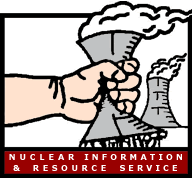Anti-nuclear groups in the United States facts for kids
Many groups in the United States work to stop the use of nuclear weapons and nuclear power. These groups are often called "anti-nuclear." They want to protect the environment and people's health. Some well-known groups include the Abalone Alliance, Clamshell Alliance, Greenpeace USA, and the Sierra Club.
These groups use different ways to make their voices heard. They might organize protests or share information with the public. They also talk to government officials. In 1992, the head of the Nuclear Regulatory Commission, which oversees nuclear safety, said that these groups helped improve safety. Their efforts pushed the agency to make things safer.
Some very smart scientists have been part of these movements. For example, Linus Pauling and Hermann Joseph Muller were Nobel Prize winners who joined these efforts. They were part of groups like the Federation of American Scientists and the Committee for Nuclear Responsibility. These scientists believed it was important to work for a safer world.
Contents
What Are Anti-Nuclear Groups?
Anti-nuclear groups are organizations that are against nuclear weapons or nuclear power plants. They believe these things can be dangerous for people and the planet.
- Nuclear weapons are very powerful bombs. They can cause huge destruction.
- Nuclear power uses nuclear energy to make electricity. While it provides energy, some people worry about accidents or how to store nuclear waste safely.
These groups work to stop the building of new nuclear power plants. They also push for the safe shutdown of old ones. Many also work to reduce or get rid of nuclear weapons around the world.
Why Do These Groups Exist?
People join anti-nuclear groups for several reasons. They are often worried about:
- Safety: Accidents at nuclear power plants, like Chernobyl or Fukushima, show how dangerous they can be. These events can release harmful radiation.
- Waste: Nuclear power creates radioactive waste. This waste stays dangerous for thousands of years. Finding a safe place to store it is a big challenge.
- Weapons: Nuclear weapons are a threat to peace. Many people fear they could be used, causing massive harm.
- Environment: Some believe nuclear power harms the environment. They prefer cleaner, safer energy sources like solar or wind power.
These groups want a future where energy is clean and safe. They also want a world free from the threat of nuclear war.
Important Groups and Their Work
Many different groups have worked on anti-nuclear issues over the years. Here are a few examples:
- Greenpeace: This well-known environmental group often protests against nuclear testing and nuclear power. They use direct action to raise awareness.
- Clamshell Alliance: This group was famous for its protests against the Seabrook Nuclear Power Plant in New Hampshire in the 1970s. They used peaceful methods to stop the plant's construction.
- Nuclear Information and Resource Service: This group provides information about nuclear issues. They help people understand the risks and work for safer energy policies.
- Physicians for Social Responsibility: This group is made up of doctors and health professionals. They focus on the health dangers of nuclear weapons and nuclear power. They educate people about these risks.
- Sierra Club: This large environmental organization also works on nuclear issues. They advocate for clean energy and oppose nuclear power.
These groups, and many others, have played a big role in shaping discussions about nuclear energy and weapons in the United States.
See also
- Anti-nuclear protests in the United States
- Environmental movement in the United States
- List of anti-nuclear groups
- Nuclear energy policy
- Nuclear power in the United States
- Nuclear safety in the U.S.


